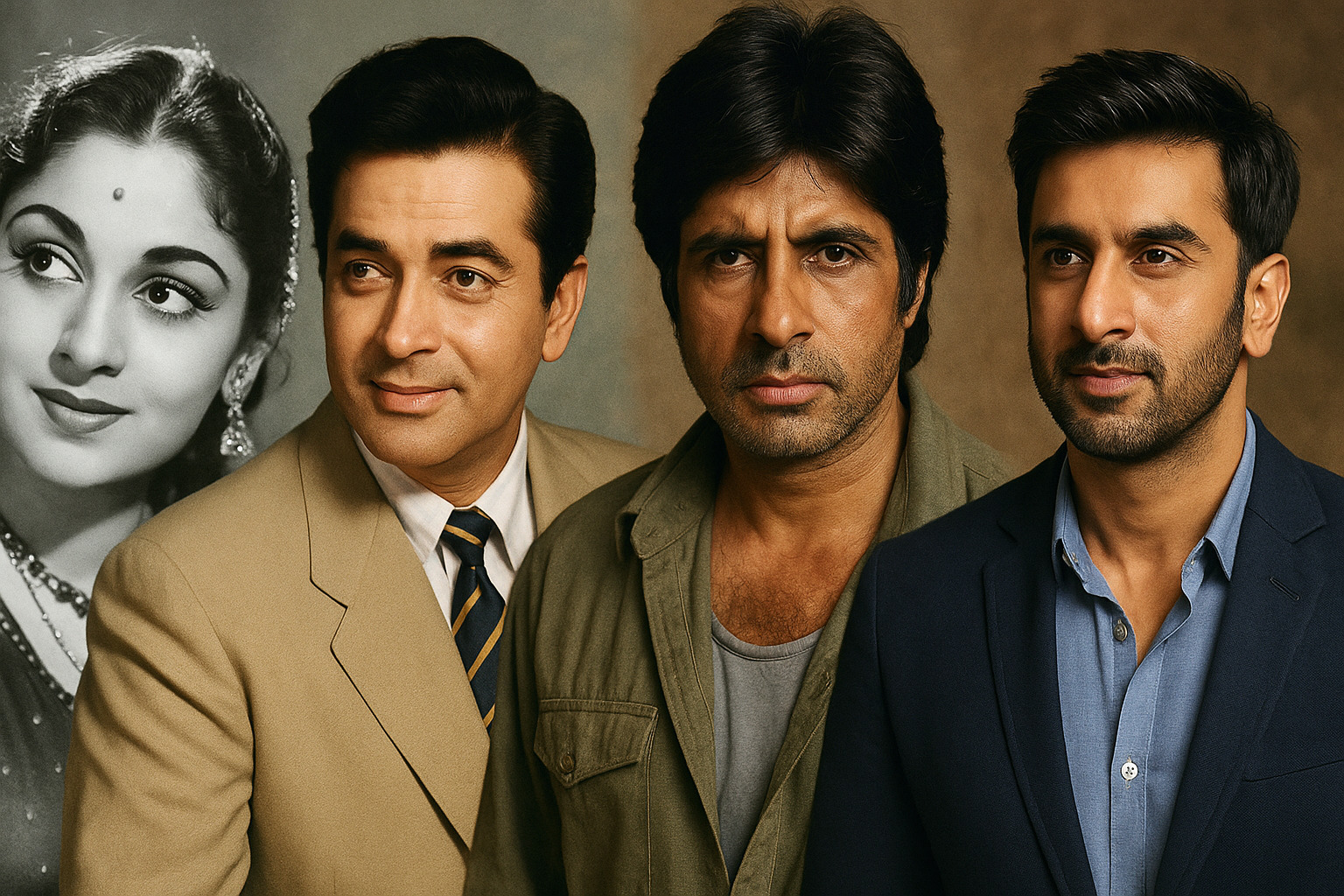
Bollywood isn’t just an industry—it’s a living, breathing reflection of India’s socio-political shifts, cultural moods, and storytelling traditions. From its black-and-white beginnings in the 1940s to the high-budget spectacles of the 21st century, Bollywood has served as a mirror and a motor for Indian identity both at home and abroad.
The 1940s–1950s: Birth Amidst Partition and Nationhood
The 1940s carried the emotional weight of Partition and Independence. Indian cinema absorbed this upheaval through themes of identity, loss, and social change. Films such as Neecha Nagar (1946), which won at Cannes, pointed to growing global recognition. Directors like Mehboob Khan and Bimal Roy told stories grounded in class struggle and agrarian life.
Key Features of the Era:
- Rise of social realism
- Nationalistic and post-colonial narratives
- Black-and-white cinematography with heavy theatrical influence
- Introduction of playback singing as a cinematic staple
The 1960s: Romance, Music, and National Imagination
This decade belonged to charisma and melody. The figure of the romantic hero—Dev Anand, Shammi Kapoor, Rajendra Kumar—grew iconic. The music composed by Shankar-Jaikishan, SD Burman, and Madan Mohan defined the emotional landscape of a generation.
Notable Films:
- Mughal-e-Azam (1960): Grand production, costume drama, and tragic love.
- Guide (1965): Philosophical undertones wrapped in romantic tragedy.
- Waqt (1965): Family drama that popularized the lost-and-found trope.
The 1970s: The Angry Young Man and Urban Discontent
The gentle romance of the ‘60s gave way to gritty rebellion. The nation grappled with political unrest, unemployment, and social fragmentation. Amitabh Bachchan’s persona became a cultural shorthand for this discontent. Writers Salim–Javed shaped a new archetype: cynical, self-sacrificing, morally gray.
Era-defining Films:
- Zanjeer (1973): Birth of the anti-hero.
- Sholay (1975): Genre fusion, blockbuster dynamics, ensemble casting.
- Deewar (1975): Dialogue-heavy and ideologically layered.
The 1980s: Decline in Quality, Rise in Volume
The 1980s are often seen as uneven. Formulaic scripts, undercooked production, and over-the-top villains dominated screens. Yet this period also nurtured parallel cinema. Directors like Shyam Benegal, Govind Nihalani, and Mrinal Sen brought realism, minimalism, and sociopolitical critique.
Dual Track of the Decade:
- Masala films: Himmatwala, Coolie, Mawaali
- Art cinema: Ardh Satya, Ankur, Mirch Masala
The 1990s: Globalization and Diaspora Dreams
With India opening its economy, Bollywood adapted. Themes of migration, aspiration, and consumerism shaped narratives. Family dramas became colorful spectacles, packaged with emotion and grandeur. Shah Rukh Khan, Salman Khan, and Aamir Khan became central figures, each carving a distinct trajectory.
Major Shifts:
- Overseas markets became pivotal.
- Bollywood redefined the NRI (Non-Resident Indian) imagination.
- Yash Raj Films and Dharma Productions scaled up musical production value.
Standout Titles:
- Dilwale Dulhania Le Jayenge (1995)
- Hum Aapke Hain Koun (1994)
- Rangeela (1995): Brought fresh energy and fashion consciousness.
The 2000s: Tech, Style, and Multiplex Culture
The digital transition reshaped filmmaking techniques and viewing habits. Urban multiplexes diversified content tastes. Storylines adapted to cosmopolitan life, but also revisited rural roots. Directors experimented with nonlinear storytelling and international formats.
Impactful Films and Movements:
- Lagaan (2001): Oscar-nominated and historical epic.
- Dil Chahta Hai (2001): Set the tone for urban youth cinema.
- Rang De Basanti (2006): Blended history and present-day protest culture.
- Black (2005) and Taare Zameen Par (2007): Sensitivity in storytelling found mainstream success.
The 2010s: Genre Expansion and Digital Awakening
This decade blurred the lines between Bollywood and regional cinema. Filmmakers from across India contributed to a richer, more diverse cinematic fabric. Themes expanded into biopics, thrillers, feminist narratives, and LGBTQ+ stories. Streaming platforms began altering audience expectations.
Genre Diversification:
- Sports Biopics: Dangal (2016), MS Dhoni: The Untold Story (2016)
- Feminist Themes: Pink (2016), Thappad (2020)
- Crime Dramas: Andhadhun (2018), Badla (2019)
The 2020s: Pandemic Pause and OTT Surge
COVID-19 disrupted box office dynamics. Streaming platforms became primary windows for film releases. Intimate dramas, genre hybrids, and hyperlocal stories gained attention. Social commentary found new formats.
Notable Trends:
- Shift from star-led to script-driven content
- Rise of regional-to-Hindi remakes
- Streaming-first releases: Gulabo Sitabo, Shershaah, Darlings
- Pan-India hits reshaping expectations: RRR, Pushpa, Jawan
Five Lasting Contributions of Bollywood
- Song-and-Dance Integration
Music isn’t just an accessory—it drives emotion, transitions, and memory. - Character Archetypes
From tragic lovers to defiant rebels, Bollywood archetypes influence storytelling across cultures. - Language and Phrase Popularity
Dialogues like “Mere paas maa hai” or “Don’t underestimate the power of a common man” transcend screen into speech. - Cross-Border Appeal
From Russia to the Middle East to the Caribbean, Bollywood films created cultural bonds where political ones struggled. - Industry of Influence
Fashion, music, rituals, and even politics have mirrored Bollywood’s impact.
Looking Ahead
Bollywood stands at a junction where authenticity matters more than formula. Audiences favor grounded scripts over grandiosity. The storytelling baton now passes through voices from small towns, marginal identities, and new formats. The industry’s global connections, powered by platforms like ColorsOfIndia.media, continue expanding its relevance far beyond the subcontinent.
From monochrome frames to 4K spectacles, the journey of Bollywood reflects not just how India films—but how India feels.